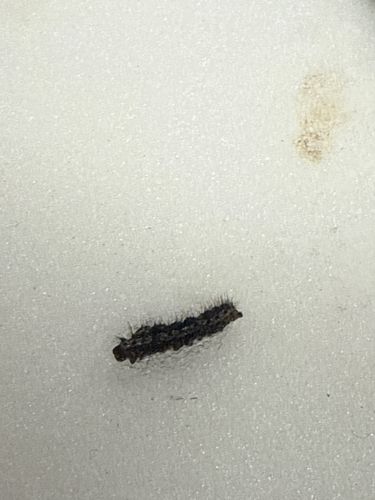Caterpillar (likely a moth caterpillar due to its appearance)
Scientific Name: Unidentifiable to species level from image (Lepidoptera larva)
Order & Family: Lepidoptera (moths and butterflies), various families
Size: Typically 1-5 cm (0.4-2 inches) depending on species and instar.

Natural Habitat
Highly variable based on species, can include gardens, forests, fields, agricultural areas. Often found on host plants.
Diet & Feeding
Mostly herbivorous, feeding on leaves, stems, flowers, or fruits of specific host plants. Some species are generalists, others specialists.
Behavior Patterns
Larval stage of moths or butterflies. Primary activities are eating and growing, undergoing several molts (instars). Will eventually pupate to transform into an adult moth or butterfly. Some may display defensive behaviors like rolling up or flicking.
Risks & Benefits
Risks can include agricultural and garden pests (e.g., defoliation), some species have urticating hairs that can cause skin irritation. Benefits include being a food source for birds and other predators, and adults are important pollinators.
Identified on: 10/3/2025